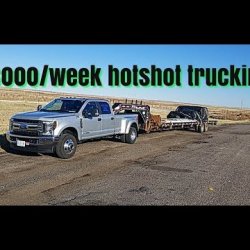the 13 best pinterest boards for learning about mobile auto repair near me

If you have a high load and need to pull down as you connect off the last of the rope, connect an overhand loop in the rope about a metre from the trailer rail or hook, loop the remainder of the rope around the trailer rail or under a trailer hook and pass the rope back up through the overhand loop. Pull it tight and connect it to the rail below with a double half drawback.
, if you own or use a trailer regularly it's an excellent idea to acquire some trailer tie-downs.. These are straps that can be pulled up tight on a cog or webcam buckle and do not need expensive knot-tying. You're loaded and ready to go. Test drive the trailer for a kilometre or two. You might have to refill and stabilize the load more carefully if the trailer sways unnervingly.
Throughout your trip, keep an eye on the load in your rear-vision mirror to make certain it stays steady. Any wobbles in your superstructure ought to be taken a look at! If you get rid of any part of the load throughout the trip, reassess the load positions and tie-downs. The road code will determine the legal speed at which you can travel with a trailer.
When driving, the additional length of your car group should be taken into account! Since the trailer doesn't follow the specific course of the car and tends to 'cut the corner', you have to swing out larger when circumnavigating corners or bends. If you're going through a narrow gateway, line up the automobile and trailer directly to the entrance before going into (if you value the gatepost!.
Bear in mind that a trailer resembles a shunting locomotive. If you stop unexpectedly, it'll push you from http://towingmatch4.simplesite.com/450939993 behind. MAKE ALLOWANCES for the weight of the trailer. You'll take longer to stop than usual, so enable a three-car-length stopping range between you and any cars and truck ahead. Decrease well before crossways to make sure you can stop in time.
DON'T apply the brakes if the trailer starts to sway. Take your foot off the accelerator and let the vehicle decrease. Consistent the steering wheel. Do not attempt to steer out of the sway. Sudden turns can worsen the sway. When taking a trip downhill, constantly utilize a lower gear. Avoid changing lanes or cornering suddenly, specifically on gravel or oily roads. If you use your brakes unexpectedly the trailer might jack-knife (i.e. swivel round sideways, pushing your cars and truck out of control).
Don't be a roadway hog. Drive carefully however be thoughtful of following traffic by pulling over at an ideal place to let them pass. Turn the front wheels to the delegated pivot the trailer to the right (and vice versa if turning right) then correct the alignment of the wheels as the trailer relocates the desired instructions.
Watching out the back window and turning the steering wheel always feels counter-intuitive in the beginning. But stand firm. You'll do it quickly as soon as you understand how – much like riding a bike. Remember, turn the guiding wheel to the left to make the trailer go to the right. Turn the steering wheel to the right to make the trailer go to the left. Straighten up gradually as you go. Back gradually and examine instructions typically. ALSO check clearances from close-by objects (houses, gates, power poles) at the front of your cars and truck in addition to near the trailer.






Ingen kommentarer endnu